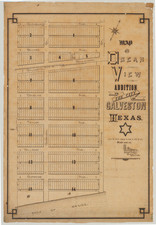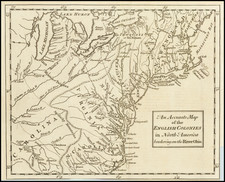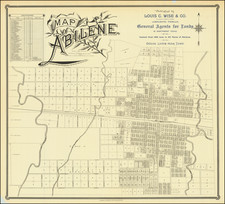Scarce map of the course of the Mississippi River, extending from the Great Lakes to the Gulf Coast, from the English edition of Le Page du Pratz's The History of Louisiana; or of the Western Parts of Virginia and Carolina, published in London in 1763.
Excellent map of the Mid-Continent, published at the close of the French & Indian War. One of the most interesting features of the map is the location of a number of mines, including a gold mine on the Arkansas River, the Mines of Duplesis west of Natchitoches in Texas, a lead Mine just north of the Wabash River, De la Mothe's Silver Mine just south of the Illinois River and a silver mine south of the Osage River.
The map also notes a number of Indian Tribes and Villages, both east and west of the Mississippi River, along with a number of early forts. The Beautiful River in the northern plains, to the West of Lahonatan's Great River, which is shown as a massive lake, extends west to a range of mountains. It bears a curious resemblance to the the Upper Missouri River and Columbia River, as Lewis & Clark would find them less than 50 years later, although for this map, the maker has selected a due westerly course for the Missouri River.
Wheat notes that the work is largely "a fanciful tale of transcontinental exploration by an Indian called . . . Moncacht-ape. Du Pratz had been to Louisiana with Bienville and was present at the founding of New Orleans." Du Pratz's work affords a great deal of useful information on the Natchez and other Mississippi tribes, which was heavily utilized in later works.
Antoine-Simon Le Page du Pratz (1695-1775), was an ethnographer, historian, and naturalist who is best known for his Histoire de la Louisiane. It was first published in installments from 1751-1753 in the Journal Economique, then completely in three volumes in Paris in 1758. The English published it in translation in 1763. The memoir was based on Le Page's years in Louisiana from 1718 to 1734. On May 25, 1718 he left La Rochelle, France, with 800 men on one of three ships bound for Louisiana. He arrived on August 25, 1718. Le Page lived in Louisiana from 1718 to 1734, and from 1720 to 1728 at Natchez, Mississippi. His companion was a Chitimacha woman (and likely had children with her). He learned the Natchez language, and befriended local native leaders.
When he finally wrote his memoir, Le Page directly used the words of many of his Native informants, rather than describing the "manners and customs of the Indians" in the detached fashion of so many colonial authors. Because of his own interest in the origins of Native Americas, Le Page was especially attentive to the account by the Yazoo explorer Moncacht-apé. Moncacht-ape was purported to have traveled to the Pacific coast and back, a century before the Lewis & Clark Expedition.
While modern scholars question the veracity of the Moncacht-ape account, Lewis & Clark carried a copy of the English edition with them on their Expedition to the Pacific Ocean.











![Carte Qui Contient La Maniere Dont Se Fait La Chasse Des Bouefs Sauvages . . . [Buffalo, Niagara Falls, Calumet Village, Huron & Illinois Indians]](https://storage.googleapis.com/raremaps/img/small/93146.jpg)

![[ Carolinas & Georgia ] Carte De La Caroline Et Georgie . . .](https://storage.googleapis.com/raremaps/img/small/99744.jpg)
![Texas [Arkansas on verso]](https://storage.googleapis.com/raremaps/img/small/99448.jpg)